Learn how to make elderflower jelly or jam with apple or orange juice. These smooth and incredibly aromatic preserves capture the best of spring flavors.
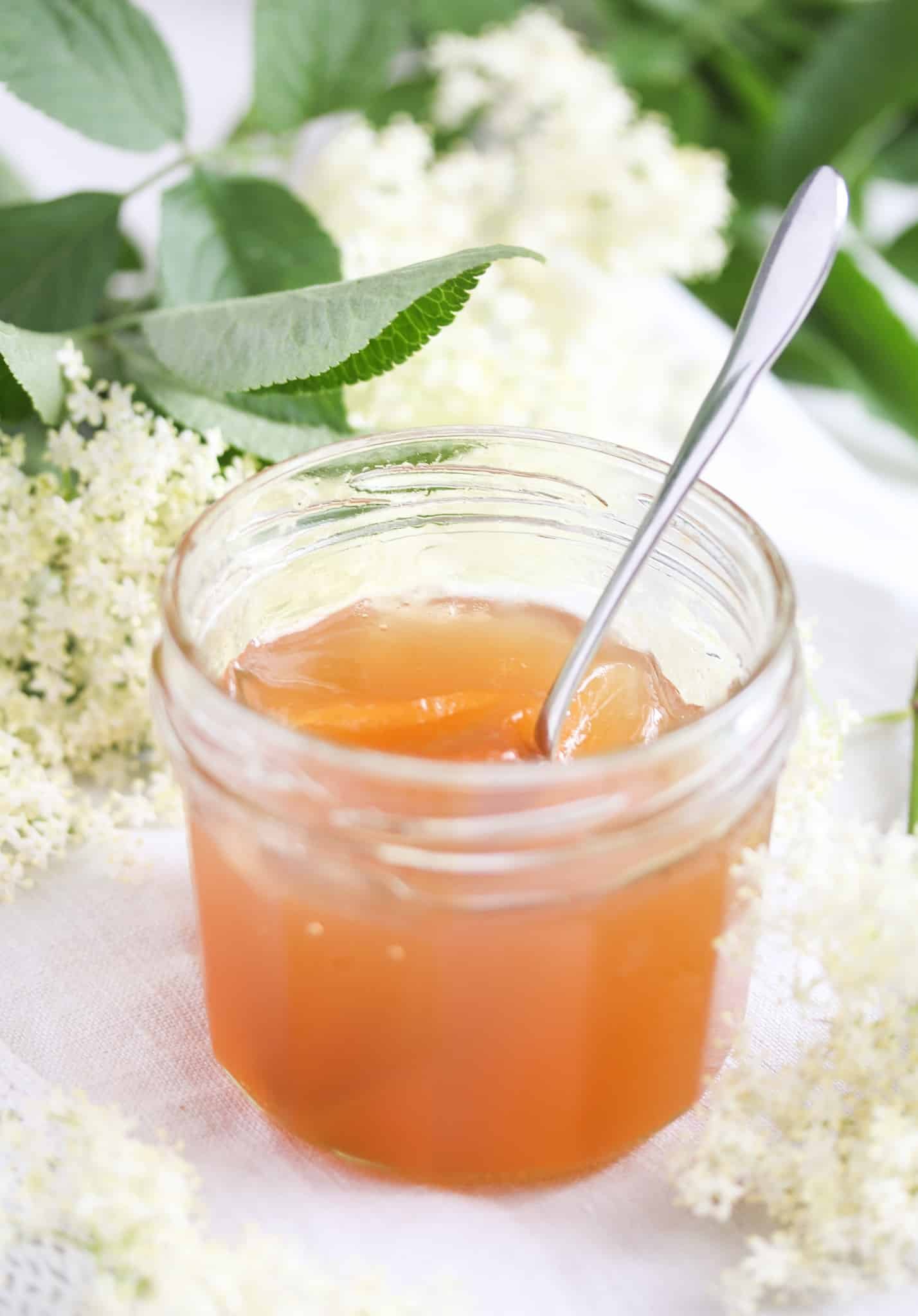
Elderflower Jelly or Jam – Two Ways
Elderflower season! I try to make the most of it every year; the fields around our village are full of large bushes hanging heavy with flowers. It’s amazing! Going for a walk nowadays it’s even better than before.
And every year, I preserve the flowers in any way I can. For example, I always make elderflower syrup, champagne, and elderflower jelly or jam. Sometimes I also make elderflower gin or liqueur with vodka, which is great for making elderflower gin cocktails or enjoying just as they are. Or just a simple elderflower tea.
And then there are all the non-preserving elderflower recipes we can make, such as cakes, desserts, fritters, and so on—this plant is just excellent!
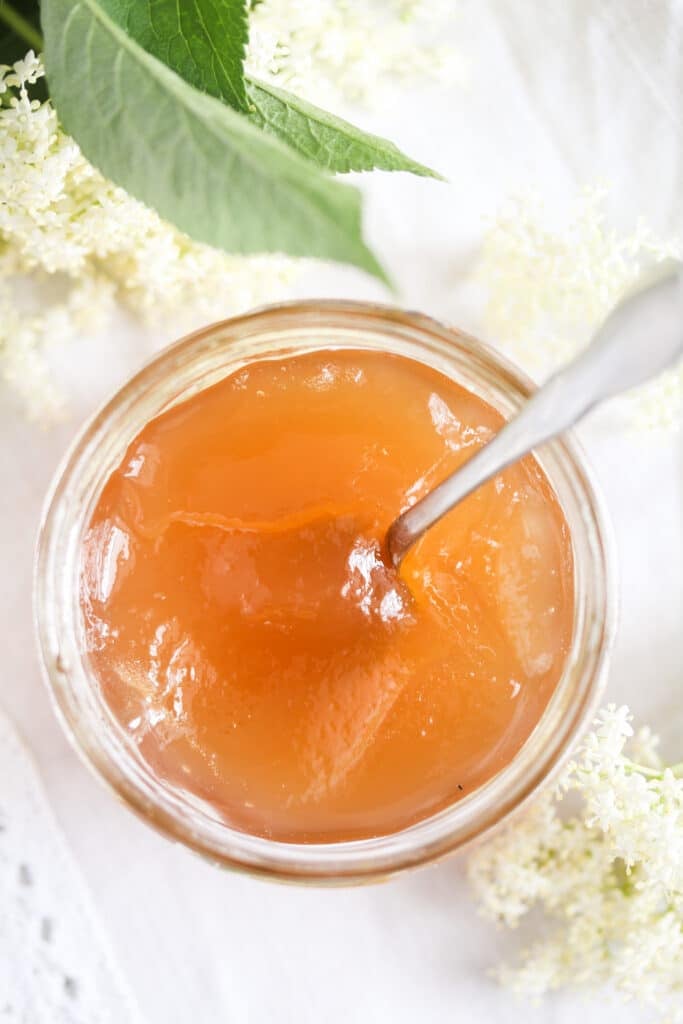
What are elderflowers?
The flowers of the elder trees, also known as Sambucus nigra, Black Elder, Ellhorn, Pipe tree, Bore tree, Eller, and Holler. The flowers are creamy colored, and their scent is fantastic. Later on, they turn into dark, almost black berries, which you can pick in autumn. While elderberries need to be cooked before consumption, the flowers are primarily soaked in liquid before preserving them in any way.
Season:
They have a short season from mid-June to early July, depending on where you live and on the weather during a particular year. This spring was cold, so I was only able to start picking flowers this week.
How to pick elderflowers?
- Only pick the flowers from trees or bushes growing in the field or in a garden where there is no traffic so that the flowers are as clean as possible.
- The flowers should be large and fully opened, and the scent should be strong. When possible, pick the flowers at midday on a sunny day; that’s when their scent is at its best. Don’t pick them if they are wet; wait until the sun comes out and they are dry again.
- Move from one tree to another and only pick a few flowers from each one; the flowers are important for insects and birds.
- Snap them underneath the head where all the small stems meet the large stem.
- Shake well, once on the spot before you put them in your basket so that the insects can remain home, and once before you are ready to use them in the sink, to make sure you are rid of all the insects.
- It is preferable not to wash the flowers; they will lose some of their flavor if you do.
- If you must do it, rinse them very shortly under cold running water and shake them well.
- Start preserving them immediately; they will go limp and lose their flavor within a couple of hours. Placing them in vases with water will not help; they will go limp anyway.
Recipe ingredients
- Elderflowers: 8-10, depending on size. Preferably, they should be pretty large; if they are tiny, pick a few more.
- Juice:
- Pure apple juice with no sugar added to it: 750 ml/ 25 fl. oz/ 3 cups.
- OR pure orange juice with no sugar added to it: 750 ml/ 25 fl. oz/ 3 cups.
- Apple juice is the standard elderflower jelly recipe popular around here, but the orange version is terrific as well. You should try both versions.
- Lemon: only the juice.
- Sugar
- Pectin: it will help set the jelly. Always use pectin according to the packet’s instructions, mainly if those instructions differ from mine.
How to make elderflower jelly or jam?
- Shake the flowers very well over the sink to remove any insects or dust that might still hang onto the plants.
- Place in a large bowl and cover with the juice.
- Cover the bowl and let it stand in a cool place (like a cellar or a cooler room, not the refrigerator) for 24 hours.
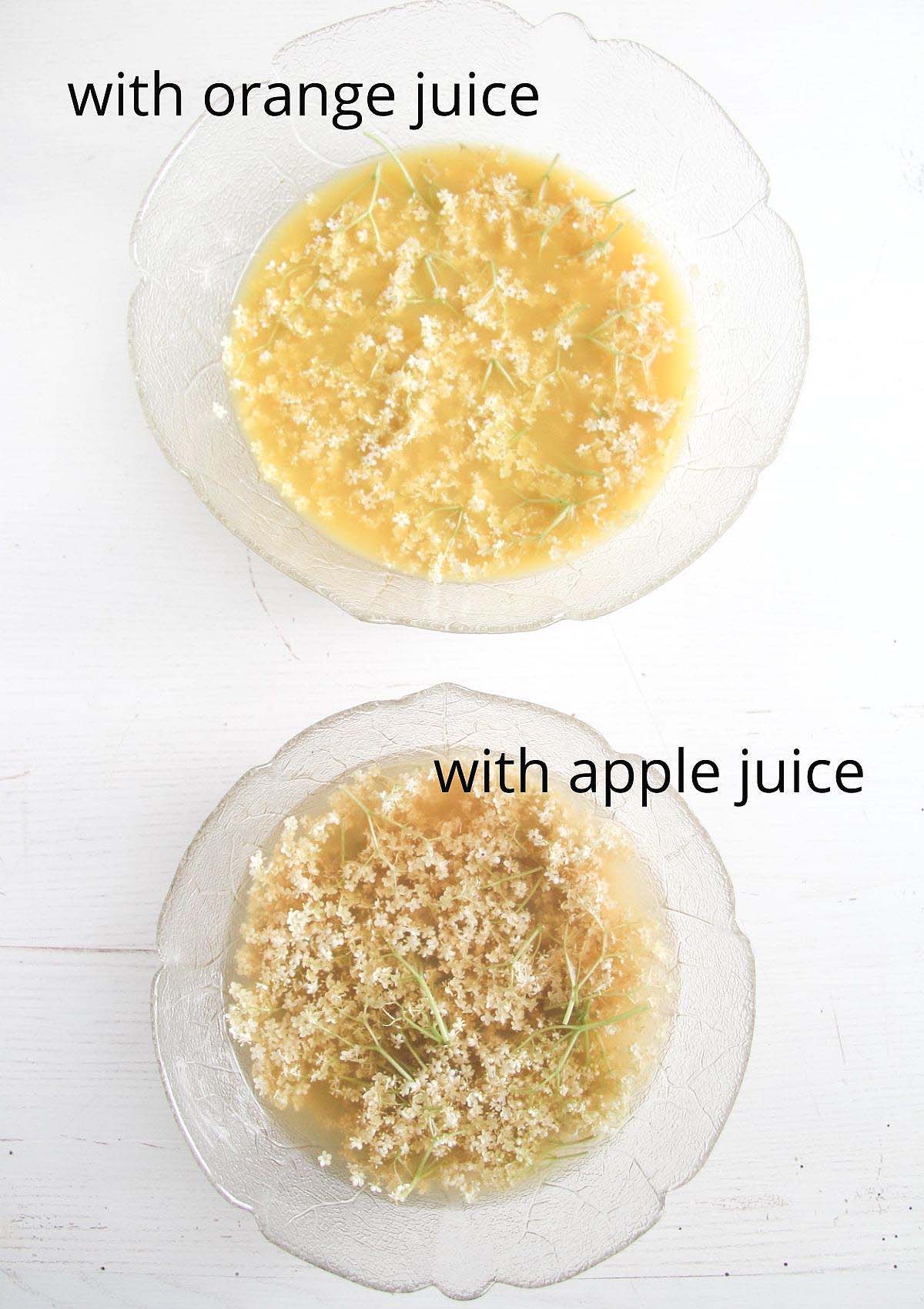
- Before starting to cook the elderflower jam, place a small plate in the freezer. You will need it to check if the preserves are ready.
- Sterilize the jars and lids and place them upside down on a clean kitchen towel until ready to fill.
- Strain the flavored juice through a fine-mesh sieve into a large pot.
- Add the lemon juice.
- Mix the sugar and pectin very thoroughly in a small bowl. Always read the instructions on the packet of pectin and regard those instructions if they are different than mine.
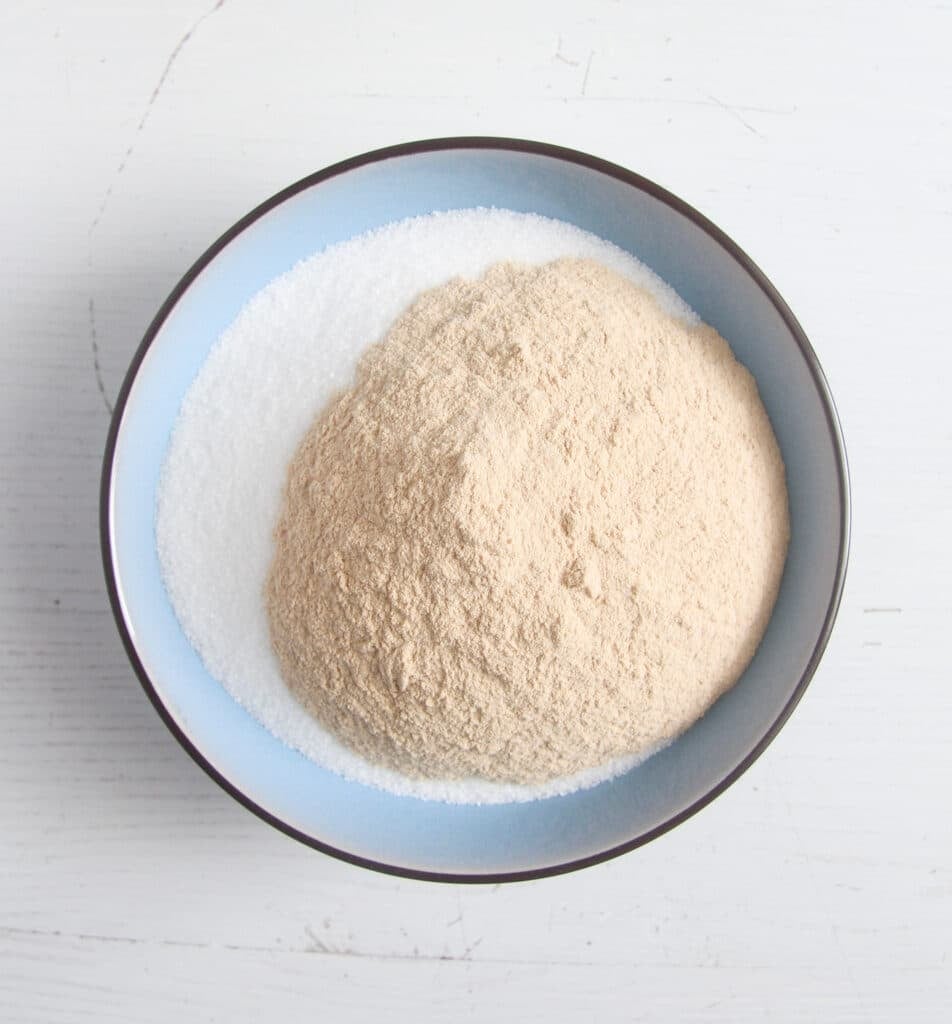
- Whisk the sugar-pectin mixture into the juice in the pot.
- Bring to a boil while stirring often.
- Once the mixture comes to a full boil, cook for 4 minutes while stirring continuously.
- Remove the pot from the heat.
- Pour a few drops of jelly on the frozen plate. If they set almost immediately, the jelly is ready. If they remain very liquid after one minute, boil the mixture for another minute and check again; it should be fine now.
- Pour into the sterilized jars. It is preferable to use a jam funnel; it makes filling more manageable and safer. Seal the jars and let them cool before moving (the Amazon affiliate link opens in a new tab).
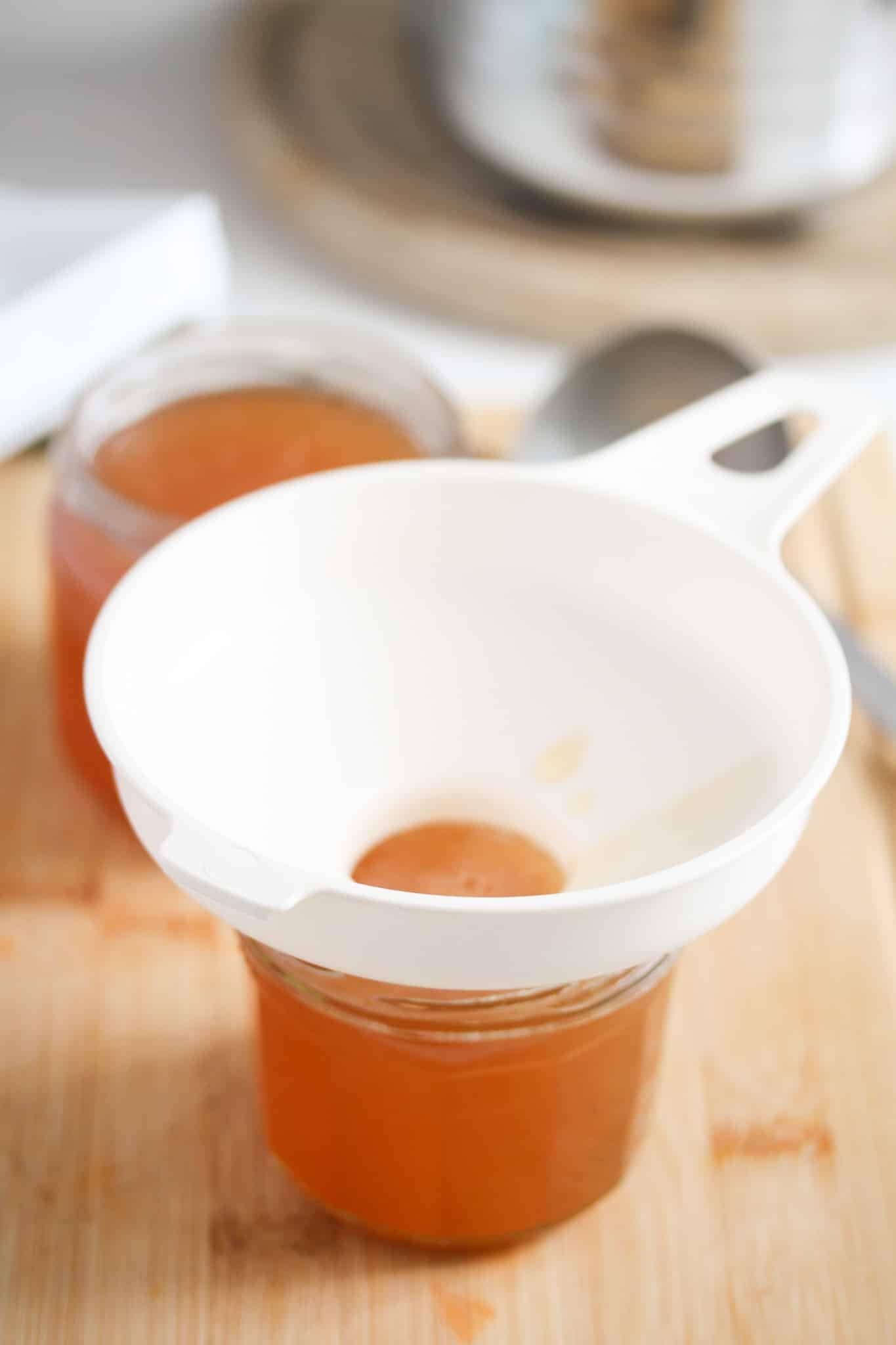
Most important tip
Use pectin according to the packet’s instructions, especially if those instructions are different than mine. Follow those instructions regarding the amount of pectin needed, how to use it, and the time it needs to cook.
How to store?
Keep the elderflower jelly in a cool, dark place (the cellar would be perfect if you have one). It will keep for at least 6 months and up to 1 year. Once you open a jar, keep it refrigerated and consume it within 2 weeks or so.
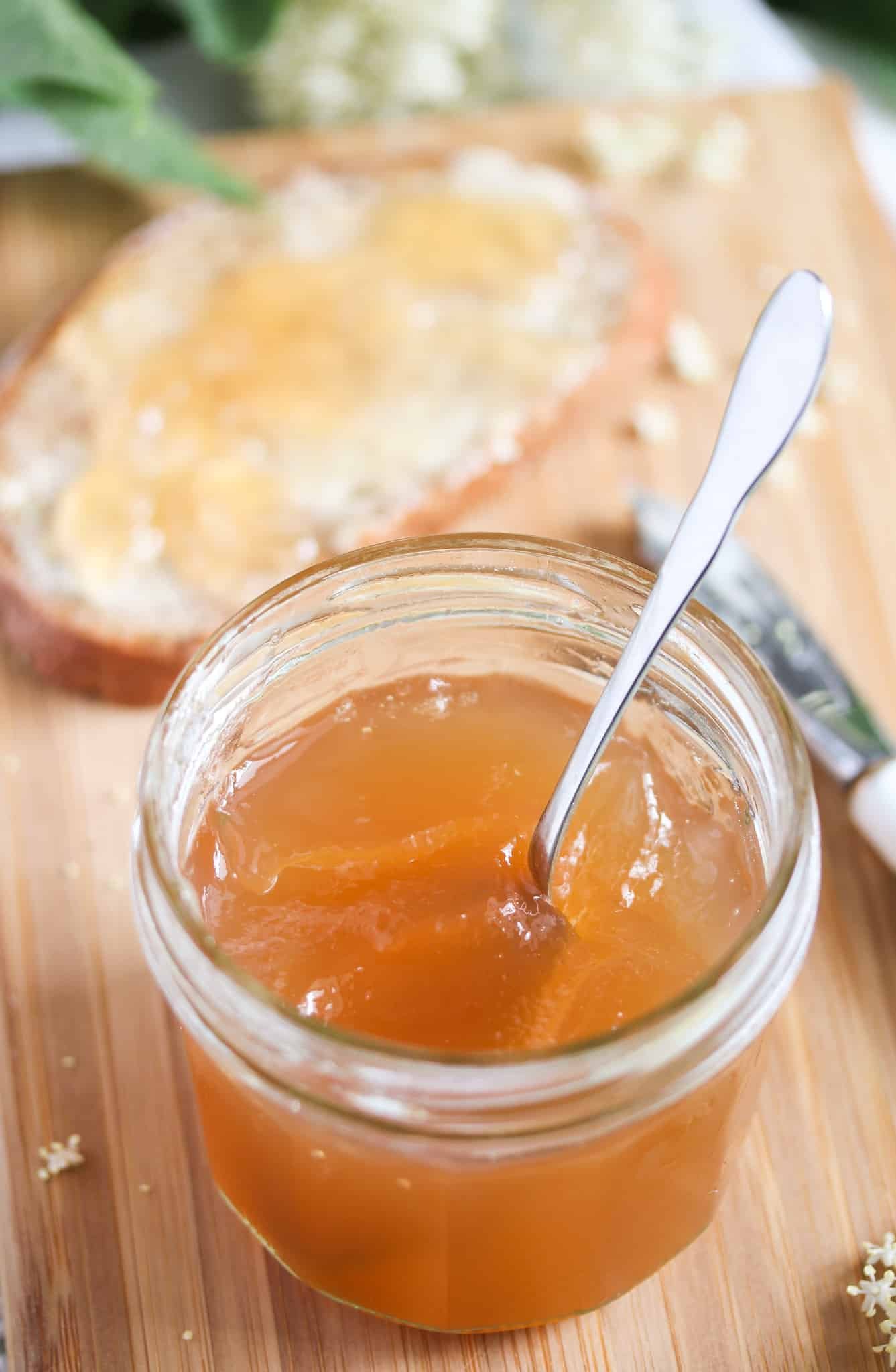
More jams and jellies
- Lemon Jelly Recipe
- Rhubarb and Orange Jam
- Simple Apricot Jam
- Strawberry Rhubarb Jam
- Blueberry Rhubarb Jam
- Raspberry Rhubarb Jam
Do you like this recipe?
Please leave a good rating in the recipe card below. Stay in touch through social media: Pinterest, Facebook, and Instagram. Don’t forget to tag #whereismyspoon when you try a recipe!Recipe
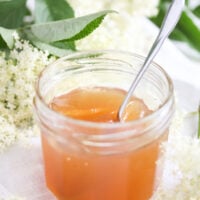
Elderflower Jelly (or Jam) Recipe
Ingredients
- 8-10 large elderflowers
- 3 cups pure apple juice with no added sugar OR orange juice with no added sugar, 750 ml/ 25 fl.oz
- 2 ½ cups granulated sugar 500 g/ 1.1 lb
- 1 tablespoon powdered pectin 15 g/ 0.5 oz, Note – important!
- 1 lemon
Instructions
- Soak: Shake the flowers over the sink to remove any insects or dust. Place in a large bowl and cover with the juice. Cover the bowl and let it stand in a cool place for 24 hours (not in the fridge).
- Preparations: Place a small plate in the freezer; you will need it to check if the jelly is set. Sterilize the jars and lids and place them upside down on a clean kitchen towel.
- Mix: Strain the flavored juice through a fine-mesh sieve into a large pot. Add the lemon juice. Mix the sugar and pectin in a small bowl. (See note). Whisk the sugar-pectin mixture into the juice in the pot.
- Cook: Bring to a boil while stirring often. Once the mixture comes to a full boil, cook for 4 minutes while stirring continuously.
- Check: Remove the pot from the heat. Pour a few drops of jelly on the plate you had in the freezer. If they set almost immediately, the jelly is ready. If they remain very liquid after one minute, boil the jelly for another minute and check again, it should be fine now, don’t overcook it, or it will become too solid.
- Transfer: Pour the jelly into the sterilized jars. It is preferable to use a jam funnel; it makes filling more manageable and safer (Amazon affiliate link). Seal the jars and let them cool before moving.
- Store in a dark, cool place, like a cellar or pantry. It will keep for at least 6 months and up to 1 year. Once you open a jar, keep it refrigerated and consume within 2-3 weeks.

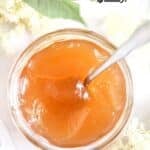
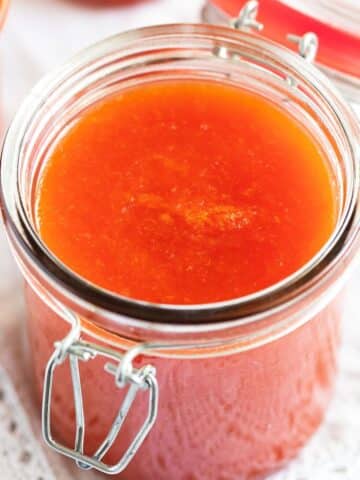
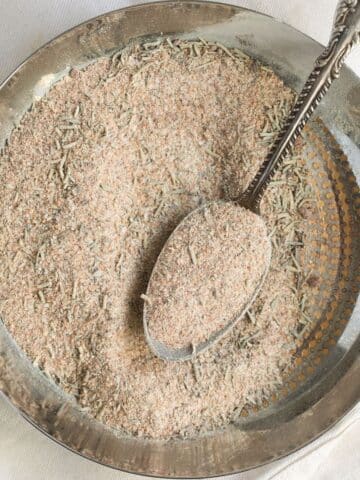
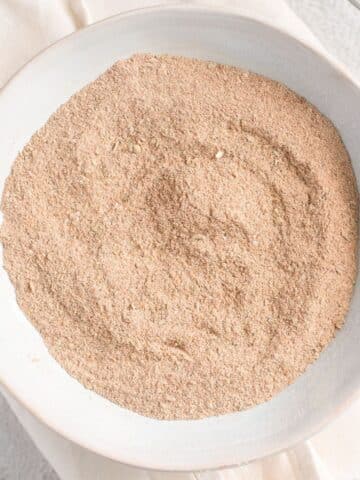
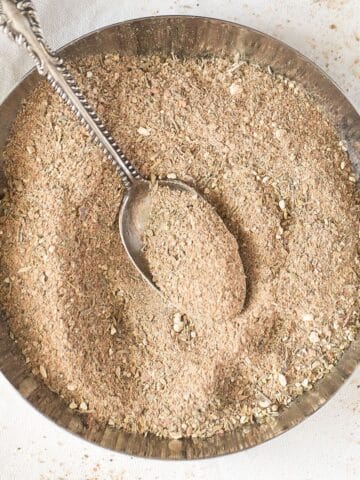

Evi @ greenevi says
I love elderflower jelly! I grew up eating this all the time but never made any myself. So definitely have to try your recipe now 😛
Adina says
It so easy. Du kannst auch Gelierzucker 2:1 nehmen, so geht es noch einfacher.
Ein Dekoherzal in Bergen says
DAS machen wir hier auch sehr gerne
WÜNSCHE NOCH EINEN SCHÖNEN ABEND
bis bald die BIRGIT aus TIROL
Adina says
Danke. Euch auch alles gute!